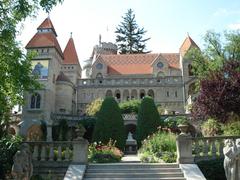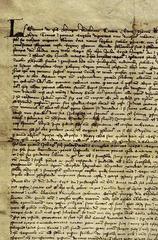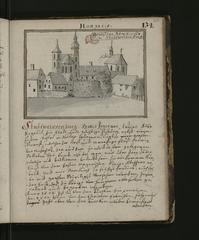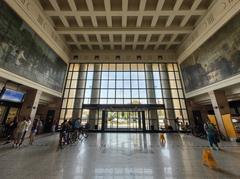
Cathedral Basilica Of St. Stephen The King, Székesfehérvár
Cathedral Basilica of St. Stephen the King, Székesfehérvár: Complete Visitor Guide
Date: 04/07/2025
Introduction
Nestled in the historic heart of Székesfehérvár, the Cathedral Basilica of St. Stephen the King stands as a monumental symbol of Hungary’s royal heritage and Christian tradition. With origins tracing back to the early 11th century, it was established under King Stephen I, Hungary’s first Christian monarch and patron saint. Serving as both the coronation and burial site for numerous Hungarian kings, the basilica became a spiritual and political epicenter (Trek Zone). Over the centuries, it has undergone Romanesque, Gothic, Baroque, and Neoclassical transformations, reflecting the country’s turbulent past and resilience (mycityhunt.com, spottinghistory.com).
Today, visitors can explore its richly decorated interior, admire frescoes and sculptures, and view revered relics such as the “Holy Right,” the mummified hand of St. Stephen (Trip101). The basilica is not only a religious landmark but also a vibrant cultural hub, regularly hosting concerts and community events (Hungary Unlocked). This guide provides an in-depth look at the cathedral’s history, architecture, and practical visitor information to help you make the most of your visit.
Contents
- Introduction
- Historical Overview
- Early Foundations & Medieval Significance
- Ottoman Era & Destruction
- Baroque and Neoclassical Rebirth
- Modern Heritage and Identity
- Architectural & Artistic Highlights
- Exterior & Façade
- Interior Design & Decoration
- Crypt and Royal Connections
- Visiting Information
- Hours & Tickets
- Guided Tours & Accessibility
- Visitor Tips
- Nearby Attractions
- Frequently Asked Questions (FAQ)
- Summary & Recommendations
- References & Further Reading
Historical Overview
Early Foundations & Medieval Significance
Founded in the early 11th century by King Stephen I, the original basilica was a centerpiece of Hungary’s Christianization (Trek Zone). Székesfehérvár itself was the first royal capital, and the basilica hosted the coronation and burial of over 30 Hungarian kings and 15 monarchs. This made it a symbol of both spiritual and political power.
Ottoman Era & Destruction
In 1543, Ottoman forces occupied Székesfehérvár, leading to the desecration and partial destruction of the basilica. The original structure was further damaged by fire in 1601 (spottinghistory.com). Despite this devastation, the location remained deeply symbolic, inspiring eventual restoration.
Baroque and Neoclassical Rebirth
Following Székesfehérvár’s liberation in 1688, reconstruction began. The current Baroque basilica, completed in the late 18th century, integrates Neoclassical elements and incorporates remnants of the earlier Gothic and Romanesque churches (mycityhunt.com). Architect Martin Grabner and Queen Maria Theresa were key figures in this ambitious project (turizmus.szekesfehervar.hu).
Modern Heritage and Identity
Today, the basilica is the seat of the Diocese of Székesfehérvár, central to Hungary’s Catholic identity. It remains a major pilgrimage destination, especially on St. Stephen’s Day (August 20), and plays a significant role in national celebrations and cultural life (Hungary Unlocked).
Architectural & Artistic Highlights
Exterior & Façade
The basilica’s Baroque façade is dominated by twin towers, adorned with statues of St. Stephen, St. Ladislaus, and St. Emeric by János Pál Huber (mycityhunt.com). The grand portal features the city’s Rococo coat of arms and is flanked by decorative pilasters and stone vases.
Interior Design & Decoration
The spacious nave is separated from the sanctuary by a red marble communion rail, and the main altar designed by Franz Anton Hillebrandt features Corinthian columns and an altarpiece by Vinzenz Fischer, depicting St. Stephen offering the Holy Crown to the Virgin Mary (en.wikipedia.org). Frescoes by Johann Cymbala illustrate key moments from St. Stephen’s life (turizmus.szekesfehervar.hu). The late Baroque pulpit and side chapels with modern Stations of the Cross by Barna Búza further enrich the interior (livetheworld.com).
Crypt and Royal Connections
The crypt houses the sarcophagus of King Béla III and his wife, linking the current basilica to its medieval predecessor and its function as royal necropolis (turizmus.szekesfehervar.hu). Although the original royal tombs are now part of the nearby Romkert (Ruins Garden), the crypt remains a poignant symbol of Hungary’s royal past (spottinghistory.com).
Visiting Information
Hours & Tickets
- Opening Hours: Daily, 9:00 AM to 5:00 PM (may vary on holidays and special events).
- Admission: Free for general entry; donations appreciated. Guided tours and special exhibitions may require tickets, available online or at the ticket office.
Guided Tours & Accessibility
- Guided Tours: Offered in multiple languages, providing insights into the basilica’s history and art. Advance booking recommended.
- Accessibility: Ramps and designated seating areas accommodate wheelchair users. Accessible restrooms and assistance available on request.
Visitor Tips
- Best Time to Visit: Early morning or weekday afternoons to avoid crowds.
- Photography: Allowed in most areas (no flash or tripods).
- Dress Code: Modest attire required; shoulders and knees should be covered.
- Etiquette: Maintain silence during services and respect worshippers.
Nearby Attractions
- St. Stephen’s Mausoleum: Commemorates the first king of Hungary.
- Basilica of the Assumption of the Blessed Virgin Mary: Remains of the original medieval basilica.
- Romkert (Ruins Garden): Archaeological site preserving royal tombs.
- Székesfehérvár City Museum: Offers historical context and exhibitions.
- Vörösmarty Square: Central plaza with cafes, shops, and local events.
Frequently Asked Questions (FAQ)
Q: What are the basilica’s visiting hours?
A: Typically 9:00 AM to 5:00 PM daily, with possible changes on holidays or special events.
Q: Do I need to buy a ticket?
A: General admission is free; guided tours and some exhibitions may require a ticket.
Q: Are guided tours available?
A: Yes, in several languages. Advance booking recommended for groups.
Q: Is the basilica accessible for wheelchair users?
A: Yes, with ramps, accessible restrooms, and assistance if needed.
Q: Can I take photos inside?
A: Yes, but please avoid flash and tripods.
Q: How can I reach the basilica?
A: Centrally located in Székesfehérvár; easily accessible by public transportation or on foot from the train station.
Summary & Recommendations
The Cathedral Basilica of St. Stephen the King is a living testament to Hungary’s royal history, Christian faith, and artistic legacy. Its layered architecture, from Romanesque remnants to Baroque grandeur, and its central role in national celebrations make it essential for travelers, pilgrims, and history lovers alike (History Tools, mycityhunt.com). The basilica’s accessibility, regular guided tours, and cultural events ensure a rewarding visit. Pair your trip with other nearby attractions—such as the Romkert and city museums—for a comprehensive Székesfehérvár experience (visitsights.com). For up-to-date information, check official resources and consider downloading the Audiala app for interactive guides.
References & Further Reading
- Cathedral Basilica of St. Stephen the King Székesfehérvár, Trek Zone
- Cathedral Basilica of St. Stephen the King, Székesfehérvár, mycityhunt.com
- Székesfehérvár Basilica Ruins, spottinghistory.com
- Visiting St. Stephen’s Basilica, Trip101
- St. Stephen’s Basilica Guide, Hungary Unlocked
- Cathedral Basilica of Székesfehérvár, visitsights.com
- History Tools: St. Stephen’s Basilica Story
- Wikipedia: Cathedral Basilica of Székesfehérvár
- Official Cathedral Website (Hungarian)
- Székesfehérvár Tourist Information
For the latest visiting information, guided tour bookings, and special event schedules, visit the official cathedral website or Székesfehérvár tourism portals. Download the Audiala app for audio guides and interactive tours, and follow us on social media for updates and travel inspiration.






